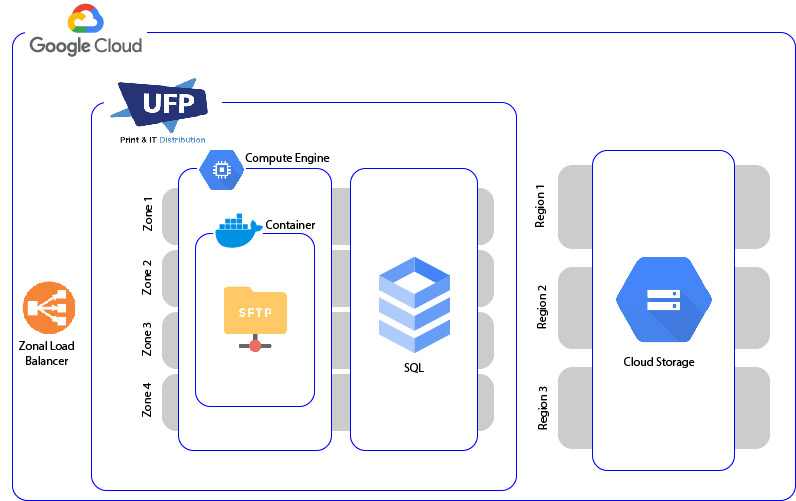Cloud-Based SFTP Solution For UFP – Europe’s Largest Supplier Of EOS

Introduction
UFP, a long-term client, was undergoing a digital transformation and moving away from a legacy order management system to a new off-the-shelf solution. However, the new system did not contain all the required functionality, so they approached us to develop a new solution to fill the gap. The challenge was to provide a high-performance, scalable, and secure cloud-based system that would provide access to both FTP and SFTP files.
Project Goals
UFP had a few specific goals in mind for the new solution, which included improved user management, flexibility in terms of root directories for individual users, and the ability to view the logs of the service without having to log in to the virtual machine shell to find the relevant file. The existing system was running on legacy FreeBSD servers in a data center, and the new system was to be a complete cloud-based replacement enjoying the benefits that come with a cloud-based architecture.
Architecture
To deliver the service we architected a solution using high availability components configured with Google’s zonal redundancy. The solution utilizes a containerized virtual machine running an SFTP server written in GoLang, and a SQL instance for user management. All files are stored in a closed system within a storage bucket, which is accessed via the SFTP server. A UI control panel, part of the SFTP server software, allows the admin to see active connections and manage users and admins, and Google Cloud logging is used to provide easy access to logs for the service.
Migration & Performance Testing
The new solution required us to migrate UFP’s existing users, files, and directory structure for a seamless switchover. We accomplished this by transferring the data from their legacy MySQL database, exporting it as CSV, and then writing a custom script to translate the data into a JSON document, adding the security credentials for the storage bucket at the same time.
The solution was thoroughly performance tested to ensure that it met the requirements. The tests involved simulating heavy usage scenarios, with multiple transfers taking place simultaneously. The results showed that the system could reliably handle continuous high throughput with a large number of parallel connections. The system was tested on a continuous loop for a significant period to ensure that it would remain stable and performant over time. The performance tests far exceeded the requirements, giving them confidence that the new solution would be able to handle their needs with ease.
Conclusion
We were able to deliver a high-performance, scalable, and secure SFTP solution for UFP’s digital transformation. The new system, which integrated seamlessly with UFP’s existing infrastructure and processes, provided UFP with improved user management, flexible root directory management, easy access to logs, and a seamless switchover from their legacy system. The performance testing exceeded the requirements, giving them confidence that their new system would be able to handle their needs both now and in the future.
